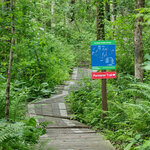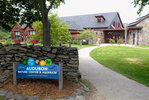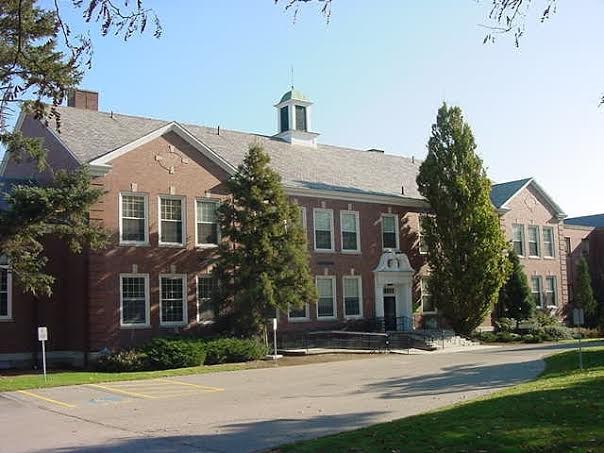New Bristol Aggie Superintendent Appointed
Bristol Aggie’s new superintendent is more than just a familiar face, he’s been involved with every aspect of the school in one way or another for more than 30 years.
Stephen Dempsey began his career at Bristol County Agricultural High School in 1983 as an Arboriculture teacher. He taught students for 24 years, then served as Assistant Principal, and Assistant Superintendent/Principal before taking over as school chief.
“I could not find the combination of: unique setting, powerful curriculum, committed/engaged/professional staff, grateful students and steadfast widespread community support anywhere other than here! It’s hard for me to express the depth of gratitude I have for the opportunity of leading Bristol Aggie into the second century of its existence,” said Dempsey.
Dempsey was serving as Assistant Superintendent/Principal, a position he had held for five years when the sitting school leader, Superintendent Krista Paynton became gravely ill with breast cancer in 2012. He assumed the superintendent responsibilities during her illness. Paynton died last spring to the shock and sadness of the entire school population. Dempsey applied for the job and was appointed Superintendent/Director in August 2013.
“It was a really tough year for us. In addition to our Superintendent, we had the unexpected losses of our Landscape Forman, Jeff Pavao, and a long time Board of Trustee member (and past alumni president) Bob Robello. For a small tight-knit community like Bristol Aggie, losses like these are especially difficult. Krista was not only the boss, but a colleague and close friend to our staff, many of whom knew her since their high school years as their Animal Science teacher. Like any family, we pulled together and got through it,” Dempsey said.
In some ways, Dempsey had been working towards the superintendent position his entire career. He earned a Bachelor of Science degree in Forestry at University of Massachusetts, Amherst. His experience includes years working with the U.S.D.A. Forest Service, the Society for the Protection of New Hampshire Forests and as a private consulting forester and certified arborist.
When he started at Bristol Aggie, Dempsey brought a deep understanding of plant and soil science and natural resource management, along with hands-on skills developed through years of vocational practice, to his students.
“Bristol Aggie gave me the opportunity to combine my love of working in the outdoors with connecting with kids – helping them develop vocational skills associated with tree care, while learning the real science behind natural resource management,” said Dempsey.
“My educational beliefs – working with students, creating lessons, developing and delivering programs that impact kids in meaningful ways - were developed here, at Bristol Aggie,” said Dempsey.
Dempsey’s quest to improve his teaching skills led him to enroll in graduate study, completing his M.Ed. in Occupational Education at Fitchburg State College.
Dempsey became the Arboriculture Division Head, serving in that position for over fifteen years.
Dempsey’s affinity for the school began early in his career and grew along with his involvement.
Dempsey helped coach the school’s hockey team with Ken Whitten, head of the Poultry Science Division, assisted the cross-country coach, Peter Johnson, and also became the Junior Varsity Basketball coach.
Dempsey was also active in extra-curricular activities, serving as Class Advisor; Student Council leader and Future Farmers of America (FFA) Advisor.
Dempsey is proud of the fact that Bristol Aggie has 100% student membership in FFA. The school is so committed to the organization that it funds membership for every student.
“The FFA focuses on employability skills, student leadership, communication training, organization and self-confidence development, all learned through agricultural involvement. Its vocational component is strongly aligned with our curriculum and reinforces the training we provide students here,” Dempsey said.
An Assistant Principal position was created and Dempsey applied for it and was hired.
“I felt like I had a lot to offer and a very strong sense of what the school should be and the direction it should continue with in the future,” Dempsey said.
Dempsey says that Bristol Aggie’s strong commitment to excellence is one of the reasons he’s stayed so long and become actively involved in the leadership of the school.
“We’ve adapted to the changing times and created programs of study offering valuable opportunities for our students to be competitive in securing currently existing jobs. But more importantly, we prepare them as problem solvers and adaptive thinkers - skills crucial for success in any job, especially 21st century jobs that may not even exist yet! That’s the key: teach them to think, to believe they can solve problems and then give them the tools to actually do it! I want this approach to learning to continue - and Bristol Aggie offers the perfect venue for it!,” said Dempsey.
Dempsey’s focus has always been on the students and preparing them for the real world. “I have the benefit of “institutional memory,” which is a great lens for viewing today’s events - while focusing on tomorrow’s opportunities. That lens greatly enhances my vision for the mission of our school, which is crystal clear: Prepare kids for THEIR futures, while instilling respect for traditional foundational values and moral strengths of the past,” Dempsey said.
Another goal of Dempsey’s is to strengthen Bristol Aggie’s connections with the agricultural community and develop the school as a resource for area businesses and the community.
“Another segment of that mission is to connect once again with the agricultural community of Bristol County by reestablishing relationships that were once a great and important part of who we are as a vocational/agricultural institution. Recreating this paradigm will be a win/win for our school, our students, families and our agricultural and other community members. I want to open the campus up as an agricultural/educational resource to the community,” Dempsey said.
Beginning this month… A new column by Steve Dempsey featuring “Gardening Tips”. Check out this new feature below…
Stephen Dempsey
Superintendent/Director
Bristol County Agricultural High School
Question: "How do I prepare my garden for Spring Gardening”?
Answer: TGISpring! What a wonderful phrase to see in print ...."Spring Planting"! After this very long, very cold winter - people, pets and plants are eager to get active and start moving again...and there are several things we should be doing to help make this year’s garden the best ever! Winter dreams: visions of warm, summer afternoons – enjoying plates of thick luscious red juicy tomato slices, topped by fresh mozzarella with chopped basil drizzled in pure virgin olive oil … become tangible...and move me to action! We all want the freshest, most flavorful, healthy vegetable and food quality for ourselves and our families...it only makes sense! And when we produce those quality outcomes through a labor of love with our small piece of earth … well, “il dolce vitae” (the sweet life) results!
Hello dear friends of agriculture. I am Stephen Dempsey, Superintendent/Director of Bristol County Agricultural High School. When given this opportunity to share my passion for agriculture and nature with our friends in SE Mass, I enthusiastically accepted in the hope of reaching out to neighbors with information on agricultural topics that will help improve everyone’s experience of living! Whether you enjoy gardening, landscaping, raising and caring for animals, hiking woodland trails or observing wildlife - you know that the experience of involvement with the natural world touches each of us in a personal and satisfying way. And if you don’t know this, I hope we can help to show you what you’ve been missing! The experience of working land, producing your own food, raising a healthy crop of corn or viewing your very own perfect flower garden is therapeutic, it just makes life better! There is no denying that. I have witnessed lives transformed as a result of connecting with natural roots. Something simple (almost a primal satisfaction) occurs. I hope this column might help you experience these joys, and I want to thank Dick Georgia and the folks at the Reporter, for the opportunity to share our perspectives.
So, back to our topic: “Preparing for Spring Planting”.
PLANNING is key! After all of the “thinking about my garden” all winter long, the next natural step is to actually “plan” for it. I like to start by considering a technique penned in the best-selling book: The Seven Habits of Highly Successful People, by Steven Covey…”begin with the end in mind”! We begin planning by thinking about what we want to end up with. All of the things mentioned above in addition to pleasant time spent working the land, creation of a showplace garden, feeling a sense of accomplishment, enjoying healthy, fresh, robust delicious food… well, all of this and more can be yours with a little forethought about how to get there. Here are the basics:
Plants are alive (simple idea with complex implications). As living organisms, plants, just like dogs, birds, horses, fish and people need certain things in their environment to stay alive…and a plan focused on the specific needs of your particular plants will let you understand how to help them thrive. So, the first step in planning your garden is: identifying exactly what you want to grow and then do some research to find out what these plants need to thrive.
Let’s start with the basics: your garden space.
Identify where to create your garden space. Is your land Hilly? Flat? Rocky? Steep? Shaded? Sunny? North, South, East, West facing? All are important considerations.
Location, location, location: After soil and nutrients, sunlight and water are the prime necessities. Plants actually create their own food from nutrients dissolved in soil water but this only happens in the presence of sunshine. Pick a spot in your garden that gets plenty of sunshine throughout the growing season and at least 5-6 hours of sun per day. Choose sun and heat loving plants such as tomatoes, corn, melons and cucumbers to be planted in the sunniest garden spots. If there are “shady” areas in the garden choose plants that grow well in cooler sites. Choose plants that will tolerate shade, like lettuce and pumpkins for these areas. Check the plant requirements to help choose where, when and how to plant.
The soil itself (that most important variable) is a storehouse of life – sustaining nutrients. Soil water, soil air, soil texture and structure provide anchorage and the pathway for nutrients to enter your plants. Wonderful or poor in quality, all soils will need tending in preparation of nourishing your plants. So prepare it well. This is called “amending” your soil, which means making it better.
Prepare your soil: Working in “Organic matter” (decayed leaves, compost, peat moss, saw dust, manure etc.) into your soil with a hoe, spade, rake or rotor tiller adds “body and nutrients”. This means it helps hold moisture in sandy soil; loosens or opens up heavy clay soils allowing “air” and water penetration and storage. Compost is best adding a nutrient blend of decayed material (leaves, grass clippings, weed etc.)to the soil.
Prepare Soil: Understanding pH: pH describes the condition of soil as either “sweet” or “sour” meaning either ”acidic” or “alkaline” (technically, pH stands for “the pressure of hydrogen ions surrounding soil particles). Most New England soils tend to be in the acidic (sour) range, but most plants (not all) prefer a more neutral (sweet) range with a pH of around 7.0. Fortunately, a lot is known about “amending” soil as it is fairly easy in the short term for the home gardener to do. Adding limestone will change soil from a “sour” to “sweet” condition by adding it at a general/rate of approximately 5 lb./100 square feet. To lower pH ½ - 1 unit: add iron sulfate or aluminum sulfate at about 3 lbs./ 100 sq. ft. This would be for plants thriving in a more “acidic” soil condition. Your soil preparation will help get plants off to a great start – but they will need additional nutrients during the growing season as the available levels in the soil are used up by the plants.
Adding nutrients: Nitrogen, Phosphorus, Potassium (N-P-K)
Organic vs. chemical fertilizer. The “Big Three.”
All living things need nutrients (elements that enable biological processes to occur) and plants are no different from animals in this. The nutrients you provide to your plants, N-P-K*, can be added either from organic (living material) or inorganic (chemical) sources, or both. The truth about nutrients is that the only way your plants get to use them is after they have been dissolved in water and drawn up into the plant from the soil water, into roots and transported to the various parts of the plant. Whether those nutrients originated from chemical fertilizer or organic compost - makes no difference to the plant! Nitrogen is Nitrogen – the source of the N does not change the make-up of that nutrient. But, and this is an important consideration, the “amount and availability” of nutrient does make a difference. Nutrients added to gardens from organic (compost) sources while chemically identical to those from non-organic sources, take longer to become available to your plants because they must first be broken down by micro-organisms. However, organic fertilizer usually provides a more constant supply of nutrients throughout the gardening season…and has the added benefit of improving soil quality while adding positive enhancements to your soil. It improves water-holding capacity, soil structure and texture and provides a wonderful environment for beneficial soil organisms like earth worms and soil microbes.
The benefits of chemical fertilizer are: they are immediately available to your plants, supporting rapid growth; provide a reliable amount of specific nutrients supplied to plants (clearly labeled on the packaging) and the ease of use. But they are used up rapidly by plants – so you do not typically get the “sustained release” benefits, provided by organic – source nutrients. The really successful growers I know (including my wife and 93 year-old Italian father-in-law, Nono) use both sources of nutrients in their gardens, quote: ”Steve, we need to get some more of that compost – oh, that’s “Black-Gold”. They use compost and chemical nutrient together when planting – then supplement with “miracle grow” until plants are “established”.
Tilling organic-sourced nutrients into your garden soil will provide benefits throughout the growing season, while using commercial source nutrients will provide a “shot in the arm” boost to garden plants.
*N-P-K are called “macro nutrients” because they are utilized in greater quantities by plants.
To summarize:
Preparation for Gardening: the Rites of Spring:
1. Psych yourself into getting outdoors, planting a garden, enjoying the fruits of your labor in every possible way
2. Decide what you want to end up with
3. Analyze your growing space
4. Do what you need to get the results identified in #2
5. Buy the right plants
6. Plant them in appropriate spaces (and as instructed from your research)
7. Take pleasure in caring for them each day throughout the growing season
8. Harvest and delight in the delicious and healthy fresh food YOU have produced
9. Relish in “il dolce vitae”



















Comments
No comments on this item Please log in to comment by clicking here